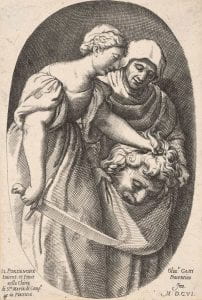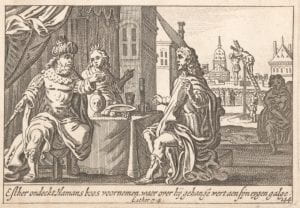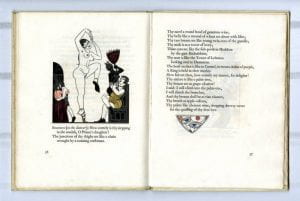Apocryphal pictures
Navigating ancient texts and images can be a mystifying experience, encountering ‘hidden’ or secret stories in the Bible, known as the Apocrypha, are a provocative example. These tantalising, albeit esoteric stories actually occur throughout Western art, indicating their appeal to artists and audiences. Therefore it is worth taking a look at a few examples in brief detail to try and disambiguate their meaning.
The Apocrypha are writings, often classified as a group of fourteen books appendices in the Old Testament. In the Septuagint (Greek version of the Old Testament) and the Vulgate (Latin version of the Scriptures) they are not considered canonical, and are therefore unauthorised because their authorship is contested. They are omitted altogether from the Protestant Bible. Several of the Apocrypha discuss strong female protagonists and also erotic themes:
Book of Judith

The story of Judith and Holofernes is a major theme in Renaissance and Baroque art history. Judith, a beautiful Jewish widow, contrives to win the affections of the general of the Assyrian army which is oppressing the Israelites. After intoxicating Holofernes so that he lies in his tent in a drunken stupor, she decapitates him. With help of her maid, she stuffs his head in a bag to show her countrymen whom she has now saved from the ‘headless’ army.
The story was excluded from several versions of the Bible because it is considered to be allegorical, or a type of historical fiction. Even though she is a heroine cleverly triumphing over evil, inspiring women the world over, Judith has been consigned by scholars to the realm of fantasy.
Book of Esther

Unlike the Book of Judith, only sections of the Book of Esther are considered Apocryphal. Set in Persia in the court of King Ahasuerus or Xerxes, Esther is the king’s wife and co-ruler. Mordecai, her relative, learns of a plot to assassinate the king which results in the execution of the conspirators. Attracting the ire of Haman, the king’s viceroy, Haman seeks to destroy Mordecai and also, all the Jews in the Persian Empire. Prompted by Mordecai, Esther intercedes and reveals Haman’s scheme to the king. Haman is subsequently hanged and the Jews are permitted to retaliate against their oppressors.
Scholars believe that the main role of the Book of Esther is to provide a narrative for Purim, the Jewish holiday which commemorates the saving of the Jewish people from Haman. Esther, another beautiful, strong woman, liberator is considered fictional.
Book of Tobit

Blind Tobit, his son Tobias and the angel Raphael populate many old master works of art, but not the Jewish or Protestant canons. The main narrative centres on Tobias who travels to Media in the company of his dog and the angel Raphael, who acts as his guide. On the journey, a fish tries to swallow Tobias’ foot as he washes in the Tigris. Raphael tells Tobias to capture the fish and remove its heart, liver and gall bladder. With the angel’s help, Tobias burns the heart and liver to bind Asmodeus, the demon of lust who is tormenting Sarah, Tobias’ cousin. Tobias then uses the gall bladder to heal his father’s blindness.
History of Susanna

Susanna and the elders is another frequently depicted theme in Western art. The story is included within the Book of Daniel in some versions of the Bible but Apocryphal in others. Susanna, the pious wife of Joachim, becomes the object of desire of two judges who first spy her walking in the garden. The lustful elders conspire to entrap her; unaware of their gaze as she later bathes in the garden, they reveal themselves and attempt to coerce her into adultery. She chooses to fall to their judicial powers rather than sin and so she is tried and condemned to death. Before her execution, Daniel intercedes and uncovers the lies of the two judges. The narrative is a roiling case of internal struggle and feminist interpretations.
Song of Songs

Also known as the Song of Solomon because Solomon was thought to be its author, the series of lyrical poems feature erotic dialogue between two lovers. Unlike any other text in the Bible, it is a celebration of sexual love. The Song is read on the Sabbath during Passover, at numerous weddings, and it has also inspired artists and writers throughout the centuries including Oscar Wilde, Marc Chagall and Eric Gill. Despite its claim of being the greatest of all songs, it has been banished from most versions of Bible.
Kerrianne Stone
Curator, Prints
Leave a Reply